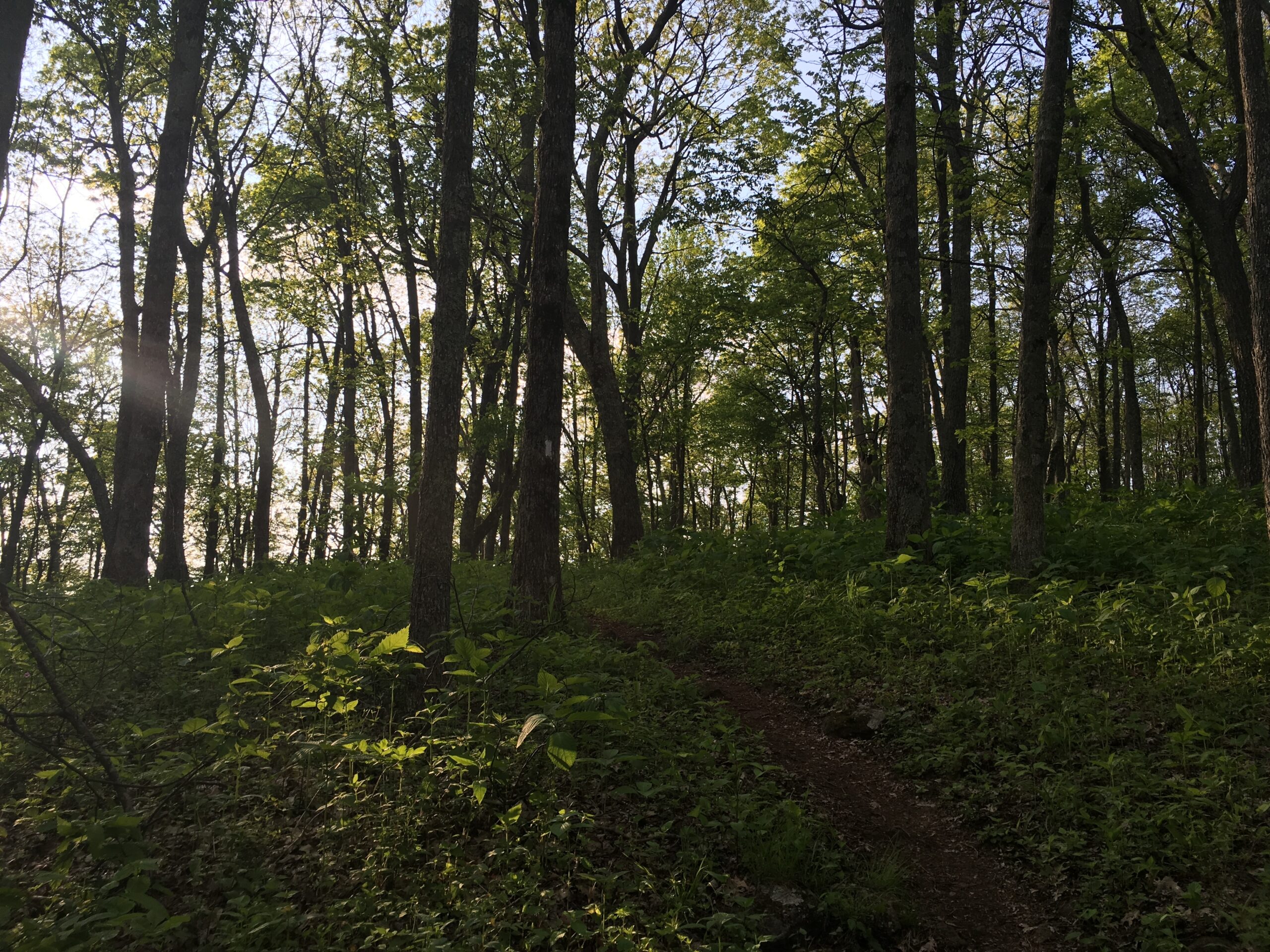Can You Hike the Appalachian Trail with No Backpacking Experience?
In short, yes. Yes, you can successfully thru-hike the Appalachian Trail with no backpacking experience. Wow, that’s great news, isn’t it?
In fact, while few people tackle an AT thru with no prior experience, the success rate for those who do is surprisingly high. Data from The Trek’s AT Thru-Hiker Surveys shows the following statistics:
- 2019: Of the ten hikers with no prior camping or hiking experience, six of them completed a thru-hike.
- 2021: 11% of hikers had no prior overnight camping experience, and 75% of them still managed to hike the entire trail.
- 2022: 2% had no prior hiking or camping experience whatsoever. Of the seven hikers who had no prior experience, four completed their thru-hikes, and the other three completed at least 1,000 miles of the trail.
So again, yes, it is possible to complete a thru-hike of the AT without any previous camping experience. These instances are rare, but they are not uncommon. Furthermore, the numbers show that experience is not a huge factor in thru-hike outcome.
Editor’s Note: Statistical ethics demands that we point out that while these numbers are impressive given the difficulty of hiking the whole AT even for experienced thru-hikers, The Trek survey’s completion rates likely skew higher than real-world numbers. For instance, 70% of our respondents, regardless of experience, report completing the entire trail, whereas the ATC reports that only 25% finish. Our dataset is smaller, and so potentially less representative of the entire thru-hiker population.
With this in mind, our data show that an AT thru-hiker with no previous camping/backpacking experience is slightly less likely to complete the entire trail than someone with experience.
READ NEXT —
- Why 75% of AT Thru-Hikers Won’t Make It
- 8 Reasons the AT is the Easiest Triple Crown Trail for First-Time Thru-Hikers
If Experience Doesn’t Make or Break a Thru-Hike, What Does?
When it comes right down to it, thru-hiking is a mental game. Certainly, a successful hike depends somewhat on factors outside a hiker’s control — illness and injury, family emergencies, weather events, and trail closures are just a few things that could interfere with a thru-hike.
Assuming a thru-hiker avoids these complications, other challenges await. Strenuous climbs, swarms of bugs, deep mud, miles of endless green tunnel, raging hiker hunger, torrential rain, extreme heat and cold… Need I go on?
A journey on the AT is many things: life-changing, incredible, once-in-a-lifetime, absolutely unique. However, it is not what most people would describe as “fun.” With that in mind, one of the most important tools a thru-hiker brings with them is a positive mindset. To hike successfully, you have to be willing to embrace discomfort and find joy in silver linings.
READ NEXT — Trail Correspondents: S4 Episode #11 | The Mental Game
Injury: The Other Big Factor
Once again, our handy AT Thru-Hiker Surveys provide us with some important insights, this time about the specific factors that drive hikers off the trail. Note the primary cause:
Injury is a risk no matter how much previous backpacking experience you have. Although hikers can’t always control when or how an injury strikes, it’s certainly possible to take precautions by doing research, testing gear, and doing as much physical conditioning as possible prior to starting.
Do as much physical conditioning as possible.
Nothing can truly prepare you for hiking 15-20 miles per day every day for six months. What preparation you can do, however, is certainly better than no preparation at all. It goes without saying, but hikers in good physical condition will be less likely to injure themselves in the first few miles.
Prior to my 2016 AT thru-hike, I lived in a big city in Central Texas with limited access to hiking trails and zero mountains to speak of. Nonetheless, local gyms, neighborhood runs, and carrying my pack up flights of stairs provided enough conditioning to help me start the trail strong.
READ NEXT — 8 Common Hiker Injuries and How to Treat Them
More Tips for Hiking the AT with Little or No Experience
Research, Research, Research.
I had very minimal backpacking experience at the time I started planning my AT thru-hike. I knew almost nothing about hiking gear or clothing, so I spent hours online reading blogs and gear reviews and talking with more experienced hikers to get an idea of which gear items would likely work best for me.
Choose Beginner-Friendly Gear
You don’t need to buy ultralight gear or high-tech gadgets to thru-hike. Ultralight gear often sounds ideal because it significantly reduces the amount of weight a hiker carries, but it also tends to sacrifice comfort. A positive mindset is easier to maintain on the trail when your backpack provides enough padding, your tent is easy to set up in the rain, and your stove is simple to manage.
That doesn’t mean you should never buy ultralight gear. It just means you’re more likely to stay comfortable and avoid injury if you gain experience with regular gear first and learn what your body will tolerate before you reduce things like pack padding and shelter warmth in an effort to cut pack weight.

Photo credit: Sam McClintic
Ask Experienced Hikers for Advice
While Facebook pages and hiker forums can provide information, it can be daunting to search through so many posts and opinions for the answers you’re looking for. It’s incredibly helpful and far more straightforward to talk with people who have successfully thru-hiked. If you don’t know anyone who’s thru-hiked before, the Appalachian Trail Conservancy provides a list of former hikers who are willing to share their experiences; you can request it at [email protected].
READ NEXT —
- Appalachian Trail Thru-Hiker Gear List
- 19 Helpful Packing Tips for Beginner Backpackers
- Thru-Hikers’ Advice for Beginner Backpackers
- 15 All-Too Common Beginner Backpacking Mistakes
Put Your Gear to the Test
When possible, a shakedown hike — a shorter hike designed to simulate your eventual thru-hike — is ideal for testing out the gear you’ve bought. Do your shoes give you blisters? Does your tent setup/door placement irritate you? Is your fully packed backpack still comfortable after several miles? Do you even like this whole backpacking thing? If you can discover the answers to these questions before you embark on a 2,000+ mile journey, you’ll improve your odds of success.
If You Can’t Do a Proper Shakedown, Practice in Your Backyard
As I mentioned previously, I wasn’t in the best location to do a shakedown hike prior to my AT thru-hike. Instead, I practiced in my own yard and neighborhood. I slept in my tent in my backyard, I went running in my trail shoes, I carried my weighted pack up flights of stairs, and I tried cooking a Knorr pasta side on my camp stove. My efforts were more than enough to help me discover that my first choice of trail runners was terrible!
Get a Shakedown at Mountain Crossings at Mile 30
If you start your thru-hike and find yourself struggling with your gear, help awaits at mile 30, where you’ll hike right up to Mountain Crossings at Neel Gap. The knowledgeable staff at this wonderful outfitter will do a pack shakedown for you and offer tips and advice on what gear you might want to add, replace, or remove for the journey ahead.
The Bottom Line
At the end of the day, backpacking experience is not a requirement for a successful thru-hike, but that doesn’t mean you can’t prepare yourself for a 2,000-mile adventure. Whether you have experience or not, research, gear shakedowns, and physical conditioning are all worthwhile contributors toward success. And no matter how many miles you hike, your ultimate tool is your own mindset: the ability to embrace discomfort and find joy in the journey.
READ NEXT —
- Appalachian Trail Thru-Hike Checklist: Do These 27 Things Before Starting the Trail
- Advice for Hiking the AT with No Experience, From Someone Who Did
- How to Plan a Budget for Your Thru-Hike: A Step-by-Step Guide
Featured image: Owen Eigenbrot photo. Graphic design by Zack Goldmann.
This website contains affiliate links, which means The Trek may receive a percentage of any product or service you purchase using the links in the articles or advertisements. The buyer pays the same price as they would otherwise, and your purchase helps to support The Trek's ongoing goal to serve you quality backpacking advice and information. Thanks for your support!
To learn more, please visit the About This Site page.

 ">
">








Comments 3
I think promoting a thru hike for a novice is malpractice. The article, disclaimer withstanding,
makes it sound like it’s easy to complete the trail with little or know hiking experience. It’s a freakin’ grind, as anyone who has done it, or reads about it on The Trek blogs knows. There’s also a lot of mental stress.
I heard a figure from RB (Radical Buddhist) that a very large % of folks starting in the south never make it out of Georgia.
I picked up RB in Front Royal, VA and took him to town for supplies and a room. Great guy. Wish I could reach out to him.
I love reading this site. Keep the stories coming.
Another not-to-be-missed article, Firefly.
But … I’m calling BS on the following statement :
“Nothing can truly prepare you for hiking 15-20 miles per day every day for six months.”
Why?
I’m struggling to get *5* miles per day. There just aren’t enough daylight hours per day.
I believe I’m carrying too much dehydrated food, ‘cuz there’s literally only one place to eat in the trail’s first 40 miles.
Would love to trade ideas, if you’re available to chat.
High Water.